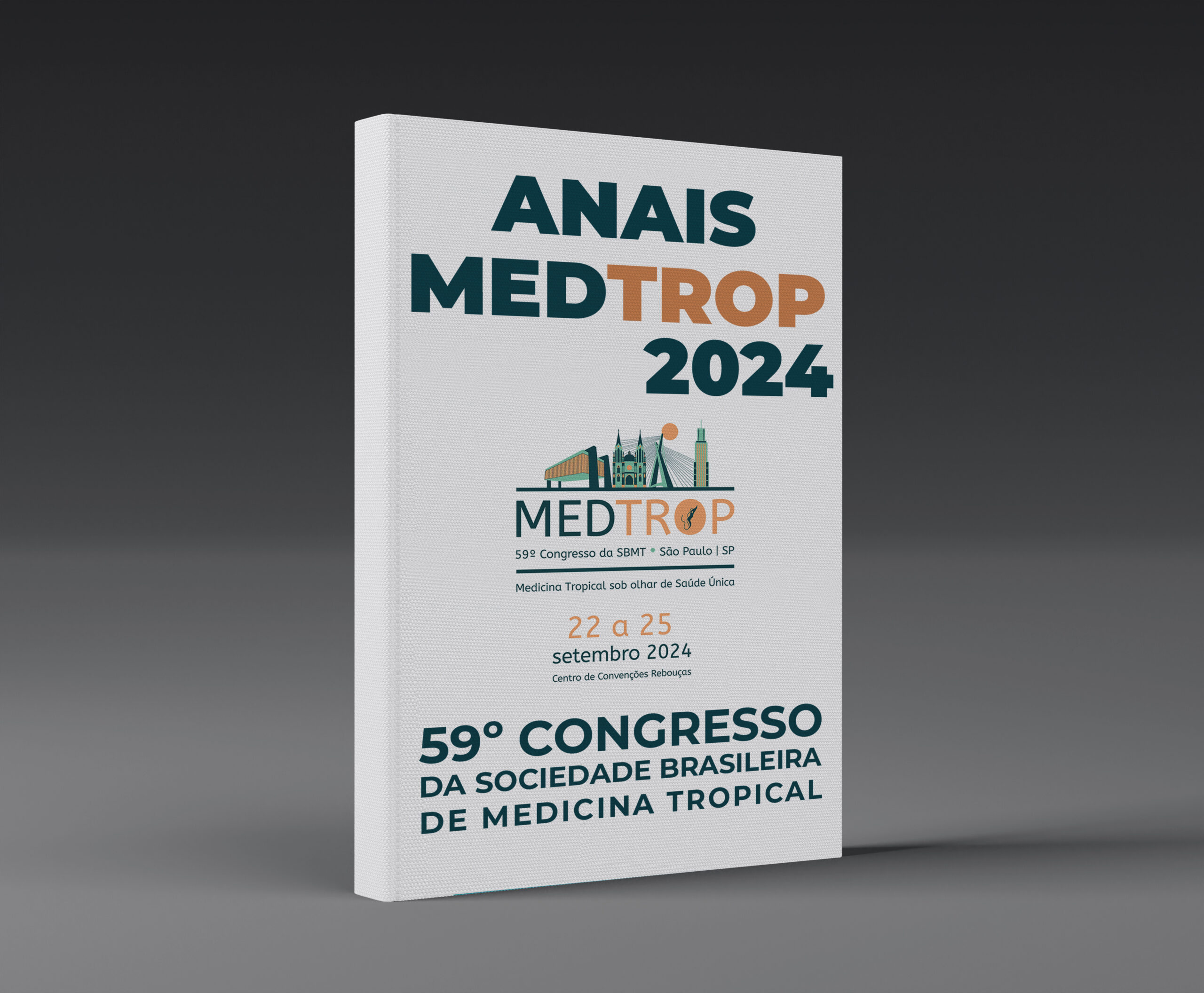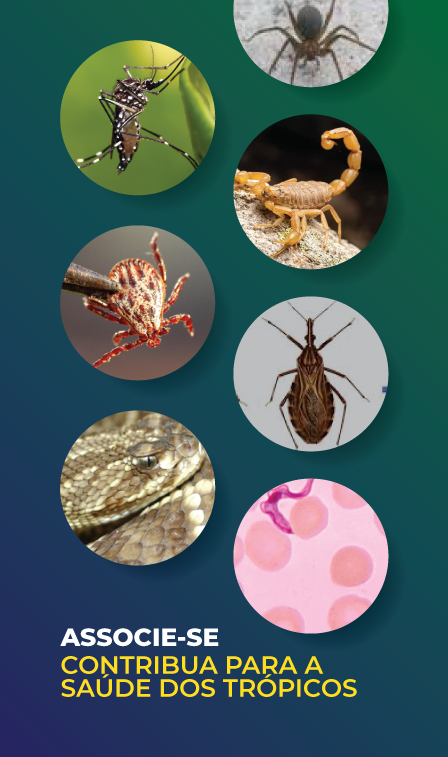
Pesquisas avaliam tratamentos seguros para infectados por HIV e leishmaniose visceral Researches assess safe treatment for patients with HIV and visceral leishmaniasis
Em entrevista à SBMT, cientistas envolvidos na iniciativa explicam avanços nos estudos sobre o temaInterviewed by the BSTMs website, scientists involves with the initiative explain the advances about the theme
10/07/2015
A taxa anual de reincidência em estudos anteriores sem o uso de profilaxia secundária era em torno de 60%. No estudo, 71% dos pacientes sobreviveram sem reincidências até o final dos 12 meses de acompanhamento
O vírus HIV é um grave problema aos povos pobres da África. Somado a outras doenças endêmicas da região, tende a ser ainda pior. É o caso dos infectados por HIV e, também, leishmaniose visceral (LV) – conhecida como calazar. Isso porque os tratamentos nessas pessoas tendem a ter uma alta taxa de fracasso. Por isso, pesquisadores vêm trabalhando, na África, em soluções.
Os estudos abrangem projetos de testes clínicos em co-infecção entre calazar e HIV, na Etiópia. Dois cientistas que participam das iniciativas, os doutores Ermias Diro e Johan van Griensven explicaram sobre a iniciativa durante entrevistas à Sociedade Brasileira de Medicina Tropical (SBMT).
Veja, abaixo, a entrevista na íntegra:
SBMT: Quantos projetos estão envolvidos na iniciativa?
Dr. Johan van Griensven: Nós estamos envolvidos em três projetos em co-infeção entre KA-HIV na Etiópia.
O primeiro é um teste clínico patrocinado pelo Instituto de Medicina Tropical da Antuérpia, que avalia a segurança, viabilidade e eficácia da profilaxia secundaria por pentamidina para pacientes com co-infecção KA-HIV na Etiópia (Pentamidine Secondary Prophylaxis – PSP trial), chamado de Teste PSP.
O segundo é um teste clínico patrocinado pelo DNDi, avaliando AmBisome com miltefosina, uma alta dose de AmBisome como tratamento para a co-infecção de KA-HIV, o qual chamamos de teste 0511.
O terceiro projeto que será implementado é um estudo longitudinal envolvendo pacientes com HIV vivendo em áreas endêmicas de LV. Nós queremos avaliar a incidência de infecção assintomática por Leishmania e o risco associado de progressão para KA (Estudo de predição de KA). Esse estudo é necessário para avaliar se podemos identificar indivíduos com alto risco de KA. Caso seja possível, o próximo passo seria um estudo de intervenção, oferecendo tratamento preventivo para aqueles em alto risco.
O real propósito é desenvolver uma ferramenta de triagem clínica, onde pacientes com HIV que vivam em áreas endêmicas de KA, são testados a cada visita clínica. Aqueles com um risco de curto-prazo de desenvolver KA seriam então tratados. Isso é similar a outras doenças oportunistas como tuberculose.
SBMT: Quantas pessoas estão envolvidas?
Dr. Johan van Griensven: Para o teste PSP nós recrutamos 74 pacientes. Para o teste 0511, menos de 100 serão recrutados. Para o teste de predição de KA, o projeto piloto será lançado em julho de 2015 envolvendo 500 pacientes. Em um cenário favorável, nós seguiremos até algo em torno de 2500 pacientes.
SBMT: O que é esperado com esses estudos?
Dr. Johan van Griensven: São três principais potenciais impactos:
1) Teste PSP: reduzir taxas de reincidência em casos de co-infecção KA-HIV;
2) Teste 0511: melhorar a resposta do tratamento da co-infecção KA-HIV;
3)Predição de KA: Prevenir KA em pessoas infectadas pelo HIV.
SBMT: Como surgiu a ideia das pesquisas?
Dr. Ermias Diro: A ideia da pesquisa evoluiu dos desafios que medicos enfrentavam ao tratar leishmaniose visceral (LV) e pacientes co-infectados com HIV no Hospital Gondar, noroeste da Etiópia. Nessa parte do país existe uma alta prevalência de co-infecção (10-20%). A infecção simultânea entre HIV e Leishmania quase sempre leva a um impasse mortal, já que ambas têm o mesmo efeito nefasto sobre a resposta imune. As infecções pelas duas doenças causam diversas situações desafiadoras. A LV pode se apresentar com manifestação clínica atípica, o que provoca dilemas no diagnóstico e atraso no tratamento. A taxa de fracasso no tratamento é alta. A maior parte dos pacientes frequentemente reincide a doença e a taxa de sobrevivência é pequena. Como isso é um dos maiores problemas de saúde pública – não somente na Etiópia, mas em todos os lugares do mundo onde as duas doenças são endêmicas, nós procuramos opções de gestão que pudessem melhorar os resultados.
SBMT: Qual a sua opinião sobre o avanço dos trabalhos?
Dr. Ermias Diro: Nós estamos realizando testes clínicos com poucos recursos. Conduzir testes clínicos demanda tanto recursos financeiros como mão-de-obra qualificada. Tivemos várias etapas de processos éticos que gastaram um bom tempo. Depois dos prós e contras, nós estivemos realizando testes clínicos para melhorar a gestão de pacientes nos últimos cinco anos. Em um de nossos testes, quando avaliamos o uso de profilaxia secundária para reincidência de LV em pacientes com HIV, nós concluímos o recrutamento de pacientes e a maior parte dos acompanhamentos. Poucos pacientes permanecem por mais alguns meses em acompanhamento. Outro teste clínico em andamento procura tratamentos seguros e eficazes para LV em pacientes com HIV.
SBMT: Quais são os resultados?
Dr. Ermias Diro: Com o uso de infusão de Pentamidina como profilaxia secundária para prevenir reincidência de LV em pacientes com HIV, nós descobrimos a taxa de reincidência. A taxa anual de reincidência em estudos anteriores sem o uso de profilaxia secundária era em torno de 60%. Em nosso estudo, 71% dos pacientes sobreviveram sem reincidências até o final dos 12 meses de acompanhamento. Nós ainda acompanhamos nossos pacientes após o final do uso de pentamidina para medir os efeitos a longo prazo. Esse resultado final do longo prazo estará disponível até o final desse ano.
SBMT: Quais resultados são esperados no futuro?
Dr. Ermias Diro: Nós prosseguiremos nossa pesquisa até que tenhamos resultados satisfatórios para a gestão de LV em pacientes com HIV. Existe uma demanda urgente para medicações seguras, eficazes e fáceis de utilizar. A maior parte dos medicamentos anti-leishmania disponíveis são injetáveis, altamente tóxicos e com baixa eficácia. Combinar a estratégia de tratamento que inclui diagnóstico e tratamento precoces de LV, combinação de terapia antirretroviral e uso de profilaxia secundária parece ser um bom método. Tratamentos adjuvantes para aumento da imunidade, vacinação, prevenção primária são práticas adicionais que devem ser estudados.

The annual relapse rate in prior studies without the use of secondary prophylaxis was around 60%. In This study, 71% of the patients survived until the end of the 12-month follow-up without relapses
The HIV virus is a severe problem among poor populations in Africa. Along with other regional endemic diseases, it can be even worse. This happens with people infected by the HIV and by visceral leishmaniasis (VL) – known as kala-azar. This happens because the treatments among these people have a high failure rate. For this reason, researchers have been working, in Africa, in a pursuit for a solution.
Studies cover projects in clinical trials in co-infection between kala-azar and HIV, in Ethiopia. Two scientists who join the initiatives, Dr. Ermias Diro and Johan van Griensven talked about the initiative during an interview to the Brazilian Society of Tropical Medicine (BSTM).
Find below the full interview:
BSTM: How many projects are involved in this initiative?
Dr. Johan van Griensven: The first is a clinical trial sponsored by the Institute of Tropical Medidine-Antwerp, which evaluates the safety, feasibility and effectiveness of pentamidine secondary prophylaxis for KA-HIV coinfected patients in Ethiopia (Pentamidine Secondary Prophylaxis – PSP trial).
The second is a clinical trial sponsored by DNDi, evaluating AmBisome with miltefosine, of AmBisome high dose as treatment for KA-HIV coinfection (0511 trial).
A third project that will be started-up is a longitudinal study enrolling HIV infected patients living in VL endemic areas. We want to assess the incidence of asymptomatic leishmania infection and the associated risk of progression to KA (The KA predict study).
This study is needed to assess whether we can identify individuals with a high risk of KA. If so, the next step would be an interventional study, providing preventive or pre-emptive treatment to those at high risk.
The ultimate purpose is to develop a clinical screening tool, whereby HIV patients living in KA endemic area, are screened at every clinical visit. Those with a high short term risk of KA development would then be treated. This is similar as other opportunistic infections such as tuberculosis.
BSTM: How many people are involved?
Dr. Johan van Griensven: For the PSP trial 74 patients have been inrolled. For the 0511 trial, less than 100 will be enrolled. For KA predict, a pilot project will be started in July 2015, enrolling 500 patients. If supportive, we will proceed to around 2500 patients.
BSTM: What is expected from these studies?
Dr. Johan van Griensven: There are three main potential impacts
1) PSP trial: reducing relapse rates in KA-HIV coinfection;
2) 0511 trial: improving treatment response in KA-HIV coinfection;
3) KA predict: preventing KA in HIV infected individuals.
BSTM: How did the idea of the researches come up?
Dr. Ermias Diro: Dr. Diro: The idea of the research evolved from the challenges we clinicians were facing while managing visceral leishmaniasis (VL) and HIV co-infected patients in Northwest of Ethiopia at University of Gondar Hospital. The prevalence of the co-infection is high (10-20%) in this part of the country. The simultaneous infection of humans by HIV and Leishmania almost always leads to a “deadly gridlock” as they both have the same deleterious effect on the immune response. There are several challenging situations with the infection of these two together. The VL may present with atypical clinical manifestation and cause diagnostic dilemma and treatment delay. The treatment failure rate is high. Most patients frequently relapse and survival is poor. As this is one of the major public health problems not only in Ethiopia but also in all other parts of the world where the two diseases are endemic, we wanted to look for management options that can improve the outcomes
BSTM: What is your opinion on the works advances?
Dr. Ermias Diro: We are conducting clinical trials in a low resource setting. Setting up a clinical trial is demanding both in resource and skilled manpower. There were several steps of ethical processes that took quite a long time. Passing all the ups and downs, we have been conducting clinical trials to improve the management of VL patients with HIV in the last five years. In one of our clinical trial where we assess use of secondary prophylaxis for VL relapse prevention in HIV patients, we have completed patient recruitment and most of the follow up. Few patients remain with few more months of follow up. Another clinical trial looking for safe and effective treatment for VL in HIV patients is still ongoing.
BSTM: Which are the results?
Dr. Ermias Diro: Using monthly pentamidine infusion as a secondary prophylaxis to prevent VL relapse in HIV patients, we found reduction in the relapse rate. The annual relapse rate in previous studies without use of secondary prophylaxis was about 60%. In our study, 71% of the patients survived without relapse by the end of 12 month follow up. We have still continued to follow our patients after the pentamidine is discontinued to see long term effects. The final result of the long term follow up will be available by the end of this year.
BSTM: Which results are expected in the future?
Dr. Ermias Diro: We will continue in our research until we get satisfying results for better management of VL in HIV patients. There is an urgent need for safe, effective and easy to take medications. The majority of the currently available antileishmania drugs are injectable, highly toxic and with low efficacy. Combined treatment strategy that includes early VL case detection and treatment, combination antiretroviral therapy and use of secondary prophylaxis for VL seems a good approach. Adjuvant immune enhancing treatment, vaccination, primary prevention are additional approaches yet to be explored.…
**Esta reportagem reflete exclusivamente a opinião do entrevistado.**








